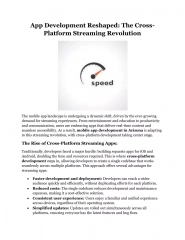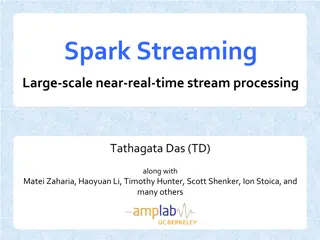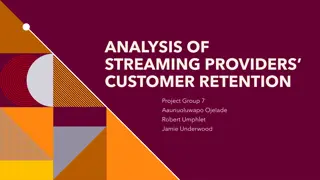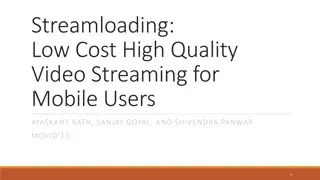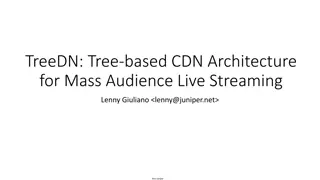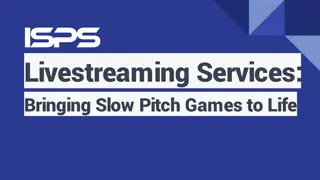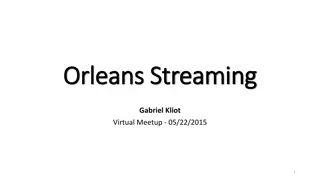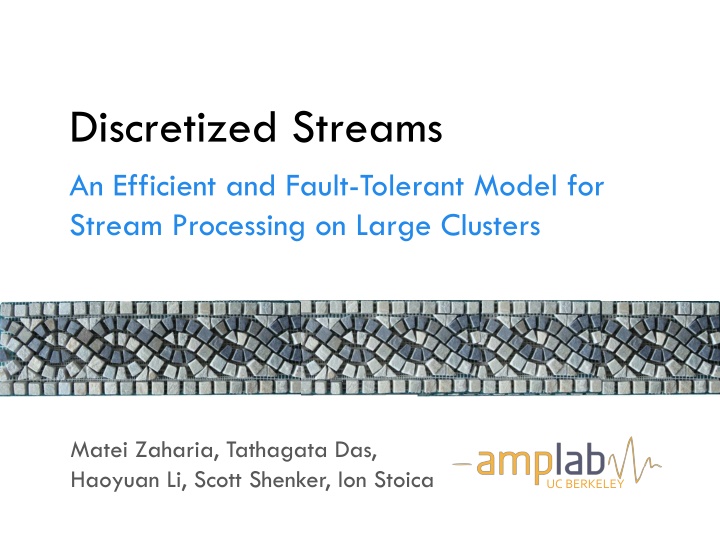
Efficient and Fault-Tolerant Model for Stream Processing
Explore the challenges and solutions for processing large data streams efficiently and fault-tolerantly on large clusters. Learn about the motivation, traditional streaming systems, fault tolerance, and observations in stream processing.
Download Presentation

Please find below an Image/Link to download the presentation.
The content on the website is provided AS IS for your information and personal use only. It may not be sold, licensed, or shared on other websites without obtaining consent from the author. If you encounter any issues during the download, it is possible that the publisher has removed the file from their server.
You are allowed to download the files provided on this website for personal or commercial use, subject to the condition that they are used lawfully. All files are the property of their respective owners.
The content on the website is provided AS IS for your information and personal use only. It may not be sold, licensed, or shared on other websites without obtaining consent from the author.
E N D
Presentation Transcript
Discretized Streams An Efficient and Fault-Tolerant Model for Stream Processing on Large Clusters Matei Zaharia, Tathagata Das, Haoyuan Li, Scott Shenker, Ion Stoica UC BERKELEY
Motivation Many important applications need to process large data streams arriving in real time User activity statistics (e.g. Facebook s Puma) Spam detection Traffic estimation Network intrusion detection Our target: large-scale apps that must run on tens-hundreds of nodes with O(1 sec) latency
Challenge To run at large scale, system has to be both: Fault-tolerant: recover quickly from failures and stragglers Cost-efficient: do not require significant hardware beyond that needed for basic processing Existing streaming systems don t have both properties
Traditional Streaming Systems Record-at-a-time processing model Each node has mutable state For each record, update state & send new records mutable state input records push node 1 node 3 input records node 2
Traditional Streaming Systems Fault tolerance via replication or upstream backup: input input node 1 node 1 node 3 node 3 input node 2 input node 2 synchronization node 1 standby node 3 node 2
Traditional Streaming Systems Fault tolerance via replication or upstream backup: input input node 1 node 1 node 3 node 3 input node 2 input node 2 synchronization node 1 standby node 3 Fast recovery, but 2x Only need 1 standby, but slow to recover node 2 hardware cost
Traditional Streaming Systems Fault tolerance via replication or upstream backup: input input node 1 node 1 node 3 node 3 input node 2 input node 2 synchronization node 1 standby node 3 node 2 Neither approach tolerates stragglers
Observation Batch processing models for clusters (e.g. MapReduce) provide fault tolerance efficiently Divide job into deterministic tasks Rerun failed/slow tasks in parallel on other nodes Idea: run a streaming computation as a series of very small, deterministic batches Same recovery schemes at much smaller timescale Work to make batch size as small as possible
Discretized Stream Processing batch operation t = 1: input pull immutable dataset (output or state); stored in memory without replication immutable dataset (stored reliably) t = 2: input stream 2 stream 1
Parallel Recovery Checkpoint state datasets periodically If a node fails/straggles, recompute its dataset partitions in parallel on other nodes map output dataset input dataset Faster recovery than upstream backup, without the cost of replication
How Fast Can It Go? Prototype built on the Spark in-memory computing engine can process 2 GB/s (20M records/s) of data on 50 nodes at sub-second latency Grep Grep WordCount WordCount Cluster Throughput (GB/s) Cluster Throughput (GB/s) Cluster Throughput (GB/s) Cluster Throughput (GB/s) 3 3 3 3 1 sec 2 sec 1 sec 2 sec 2.5 2.5 2.5 2.5 2 2 2 2 1.5 1.5 1.5 1.5 1 1 1 1 1 sec 2 sec 1 sec 2 sec 0.5 0.5 0.5 0.5 0 0 0 0 0 0 20 20 40 40 60 60 0 0 20 20 40 40 60 60 # of Nodes in Cluster # of Nodes in Cluster # of Nodes in Cluster # of Nodes in Cluster Max throughput within a given latency bound (1 or 2s)
How Fast Can It Go? Recovers from failures within 1 second Failure Happens Interval Processing 2.0 1.5 Time (s) 1.0 0.5 0.0 Time (s) 0 15 30 45 60 75 Sliding WordCount on 10 nodes with 30s checkpoint interval
Programming Model A discretized stream (D-stream) is a sequence of immutable, partitioned datasets Specifically, resilient distributed datasets (RDDs), the storage abstraction in Spark Deterministic transformations operators produce new streams
API LINQ-like language-integrated API in Scala New stateful operators for windowing pageViews ones counts pageViews = readStream("...", "1s") t = 1: ones = pageViews.map(ev => (ev.url, 1)) map reduce counts = ones.runningReduce(_ + _) t = 2: Scala function literal sliding = ones.reduceByWindow( 5s , _ + _, _ - _) . . . = RDD = partition Incremental version with add and subtract functions
Other Benefits of Discretized Streams Consistency: each record is processed atomically Unification with batch processing: Combining streams with historical data pageViews.join(historicCounts).map(...) Interactivead-hoc queries on stream state pageViews.slice( 21:00 , 21:05 ).topK(10)
Conclusion D-Streams forgo traditional streaming wisdom by batching data in small timesteps Enable efficient, new parallel recovery scheme Let users seamlessly intermix streaming, batch and interactive queries
Related Work Bulk incremental processing (CBP, Comet) Periodic (~5 min) batch jobs on Hadoop/Dryad On-disk, replicated FS for storage instead of RDDs Hadoop Online Does not recover stateful ops or allow multi-stage jobs Streaming databases Record-at-a-time processing, generally replication for FT Parallel recovery (MapReduce, GFS, RAMCloud, etc) Hwang et al [ICDE 07] have a parallel recovery protocol for streams, but only allow 1 failure & do not handle stragglers
Timing Considerations D-streams group input into intervals based on when records arrive at the system For apps that need to group by an external time and tolerate network delays, support: Slack time: delay starting a batch for a short fixed time to give records a chance to arrive Application-level correction: e.g. give a result for time t at time t+1, then use later records to update incrementally at time t+5
D-Streams vs. Traditional Streaming Concern Discretized Streams Record-at-a-time Systems Latency 0.5 2s 1-100 ms Not in msg. passing systems; some DBs use waiting Consistency Yes, batch-level Failures Parallel recovery Replication or upstream bkp. Stragglers Speculation Typically not handled Unification with batch Ad-hoc queries from Spark shell, join w. RDD Not in msg. passing systems; in some DBs

